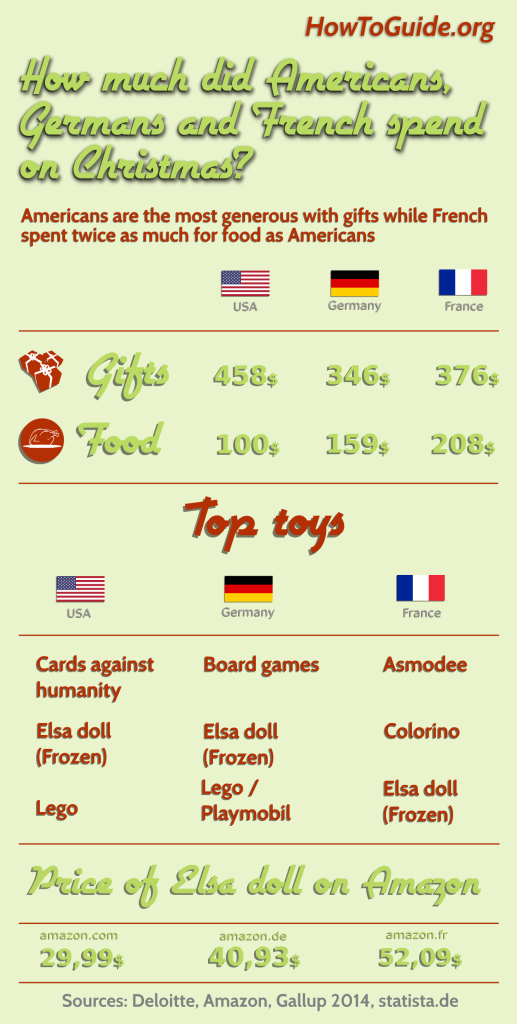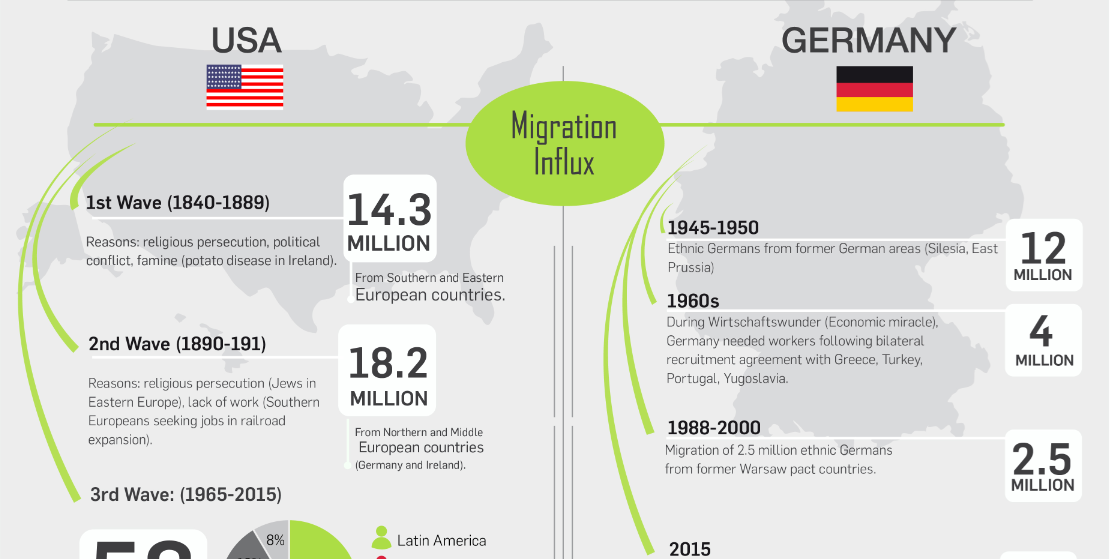
Americans spent more for gifts than Germans and French
Americans are the most generous with Christmas gifts while French people spent twice as much for food as Americans. Considering the importance of food in France, this is not really a surprise. One reason is certainly that lobsters and seafood are a lot more expensive in France. Furthermore, the French love to spend hours on eating and talking with family and friends… Or talking about food with family and friends!
Lower retail prices in Germany than in France
Germans and French people spent about the same for gifts. The retail prices in Germany are generally lower than in France. For example, the Frozen-Elsa doll is 41$ worth on the German Amazon website but 52$ on the French site. This explains the small difference between expenditures for gifts between Germany and France.
But why did Americans spend more for gifts?
I am just wondering why Americans spent 22% more on gifts than we did. Are the gifts more expensive here? Not at all. The Elsa doll is 40% cheaper on amazon.com than the same one on amazon.fr (checked on Dec. 21st). I can only guess: Americans give more presents. If anybody has a better explanation, just leave a comment! I would love to hear from you.





Very interesting statistics!
Having lived in France & the US, and being quite familiar with German culture, these figures are no surprise to me and make perfect sense.
The biggest difference between France and Germany is in the importance of food (paramount in France), and to a lesser extent, price differences favoring Germany. Between these two countries on one hand, and the US on the other hand, the big difference is in the number of presents bought. Europeans who witness an American Christmas are often shocked by the mountains of presents around the Christmas tree. But presents exchanged in America are often of less individual value than the gifts exchanged in Europe (costume jewelry vs. fine jewelry, for example).
Louis
Thank you, Louis, for sharing your experience!